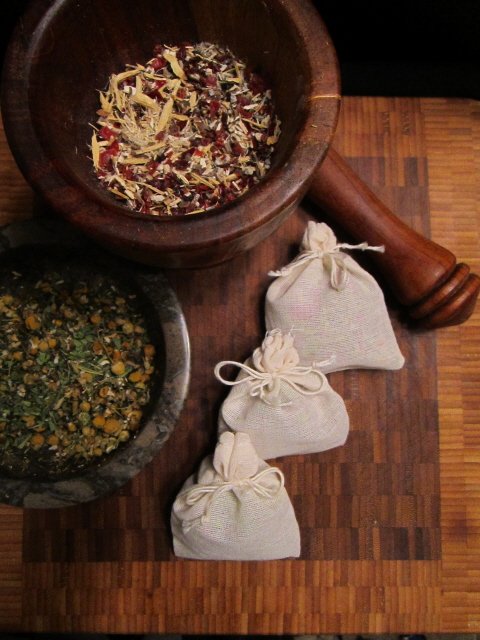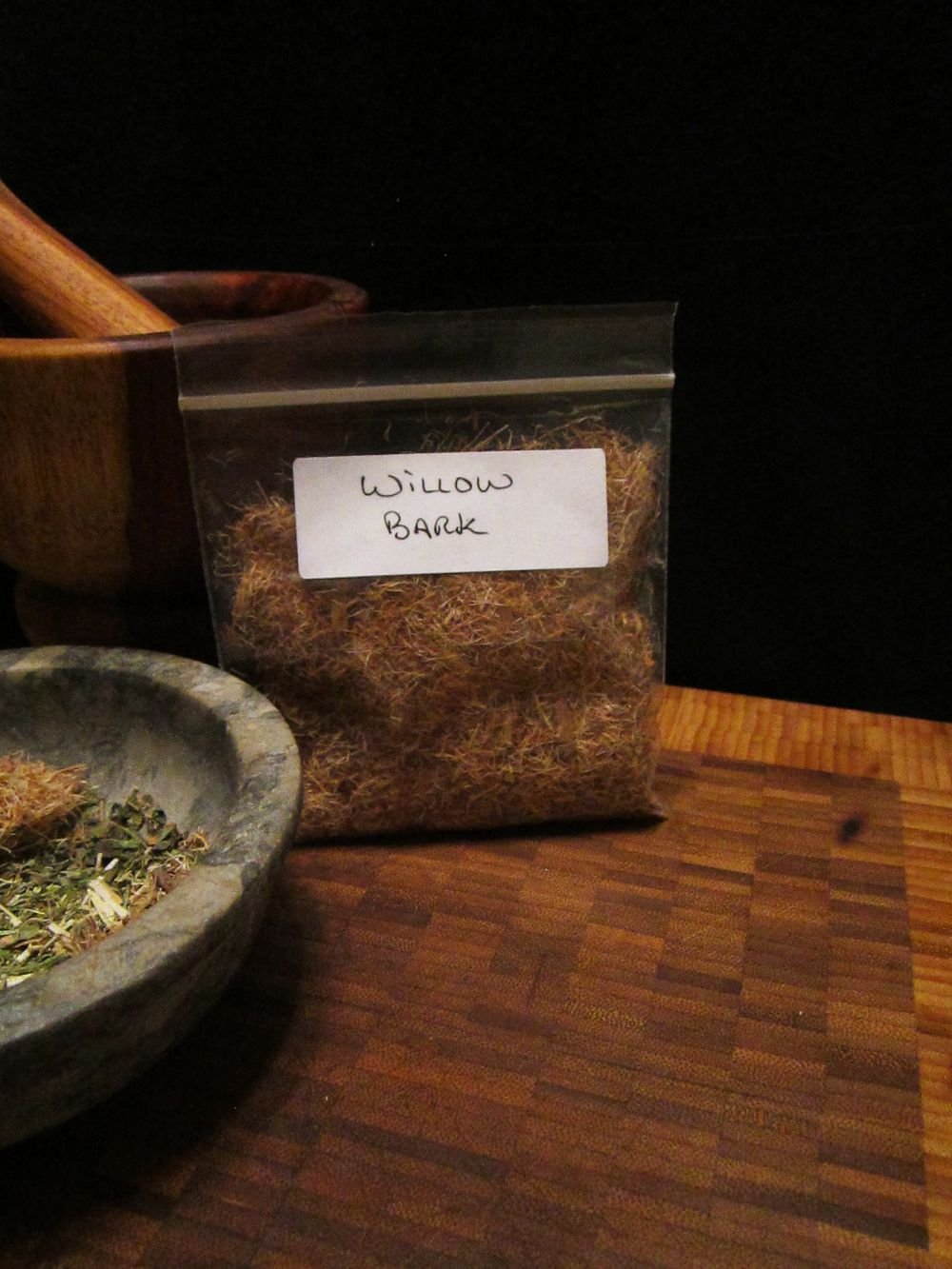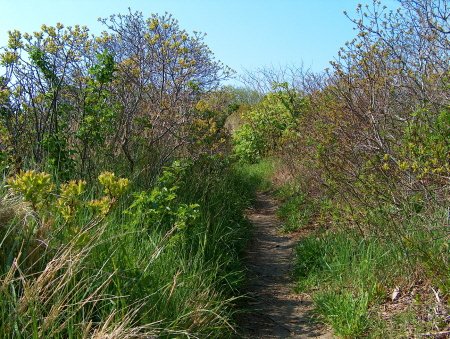These are the two basic ways to prepare herbs, for teas, cooking liquids, adding herbs to creams, baths, skin washes, water based compresses...and a variety of other uses.
Both methods are used to extract the medicinal properties of an herb, into the water. You will see me stress over and over as we go along, to COVER well...most of the medicinal properties are contained in the volatile oils of a plant, and escape in the steem.

Infusion - An infusion can be done in hot water, or room temperature water (such as sun tea), and both are valid ways depending on the plants used.
The infusion method is used for delicate plants such as flowers, leaves, fresh fruits, berries, and even some rhyzome (inner bark usually of roots and the smaller roots that run sideways off the main root) when it is very light and fluffy. The herbs can be placed directly into the water, or used in muslin tea bags.
Apparently the word gods have changed the spelling, what used to be Rhyzome, is now spelled rhizome. Remember when crayola had a crayon called Grey?
*Sun tea... Fill a jar with clean water, add herbs, cover tightly, shake and then let sit in the sun for at least 6 hours (up to 2 days is fine)
*Hot Water... Add clean water to a pan, and bring to a boil. Reduce heat to a medium simmer, add herbs and stir in gently, COVER tightly, and turn heat off. The steeping time will depend on which herbs you are using, and can vary from 10 minutes to 2 hours or more. Keep the pot covered tightly, no peeking in at the tea, just wait the proper time. By keeping it covered well, the medicinal effects will be stronger as the volatile oils are absorbed back into the water/tea.
In general, times will go like this;
Flowers - 10 minutes
Berries - 20 minutes to an hour
Fruits - 1 hour (a little longer for peels)
Fluffy Rhizome - 2 hours or more

Decoction - is the method used to draw out the medicinal properties from roots, and other fibrous plants...this includes grasses, barks, dried berries, seeds, nuts and most rhizome.
I like to use the analogy of eating a good & plenty, or a sour patch kid. Pop one in your mouth and you experience one flavor, but if you chew it, or wait a while, there is another completely different flavor behind the first flavor. Decoctions are the way to find the inner or hidden properties.
Cinnamon for example. If you take a cinnamon stick and drop it in tea, you will get the flavor, and a small bit of the medicinal properties...but after decoction, you will get the full medicinal quality.
*Decoction process - Herbs are usually measured by weight, large roots broken up, or cut and broken...seeds slightly crushed in a mortar, etc...you basically need to make it easy for the water to reach inside the plant fiber and extract the medicine.
Take a pot with clean water, bring to a boil, add herbs, COVER tightly, let boil continue for 1 minute, then reduce heat to a med to low simmer. Lift the lid once to check the simmer, then cover tightly and simmer for 20 minutes to 2 hours or more.
General times;
Light rhizome - 20 minutes
Dried berries and seeds - 30 minutes
Grasses and stems - 20 to 30 minutes
Bark and heavy rhizome - 30 minutes to 1 hour
Roots - 1 to 2 hours
As you can see by the varied times, if you are making a tea that has roots, berries, flowers etc...there is a process. Herbs are added at various times depending on what they are. Simply tossing a tea bag into a cup will Rarely equal medicinal tea.

And there you have the two basic methods of medicinal herbal preparation. I will be going over many more methods as we move along :)
This is a {Steemit Original] All words and photos by Elew
To read my other Medicinal Herb posts...
@elew/teas-oils-ointments-and-balms
@elew/medicinal-tea-vs-commercial-tea
